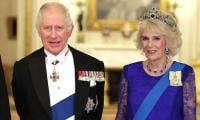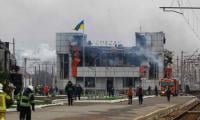Government is a very demanding business, much more difficult than commentators and critics recognize. It’s a multifaceted process that requires balancing a range of competing and demanding priorities. The future of Pakistan, and of all its citizens, depends more on the quality of what is achieved rather than on how much is achieved in the coming months.
Three-pronged agenda: Today’s economic calling is both about managing the short-term challenges, and also about giving a sense that we have an understanding of the issues hampering sustainable development. Let us consider a three-pronged approach. First, making hard but necessary choices in the immediate; second, improving implementation of the work-in-pipeline; and third, presenting a sound economic framework for growth, which can permanently overcome the periodic balance of payment crisis.
Immediate: Let us build on the short-term decisions partly highlighted in our last article on April 4, 2022 (‘The economy challenge’). There is a consensus that the country should try to complete the on-going programme with the International Monetary Fund (IMF). However, it is not that straightforward. For Pakistan, it’s not just about reverting to the IMF. It is more about doing its own homework on identifying a set of policies that should form part of the Memorandum of Economic and Financial Policies to be agreed with the Fund – that’s what really counts.
Programme continuity can certainly help in managing the rising external financing needs and building the declining reserves of the State Bank of Pakistan (SBP). Focus should be on building the Net International Reserves, which signal the quality and usability of SBP reserves. IMF programme resumption will be a positive signal to markets and can create a semblance of confidence.
A lot is said about consistency of policy. However, that alone is not enough. It is more about calibration of monetary, fiscal, industrial and trade policies, which is of significance. In this regard, Budget 2023 needs to be prepared considering a large reform effort. Whereas revenue reforms get the bulk of the attention, it is the expenditure side that needs serious consideration. Public Sector Development Programmes (PSDP) need a focus towards the software of the economy and a moratorium on new projects funded by PSDP. There should be a clear signal to move beyond amnesties and take tough decisions on taxing agriculture income, capital gains and retail sides. The Budget 2023 document has to demonstrate that it can wind back the budget deficit without stifling economic growth. This requires true hard work and calibration.
Energy pricing policies are bleeding the exchequer and are thus unsustainable. The policy needs revision and astute management. Higher prices driven by the global commodity super cycle and the effect of rupee adjustment are hard to pass to the consumers already reeling under inflationary pressures. But, as tough as it may be, the need is about showing prudence over populism.
Increasing the breadth and quantum of adequately targeted subsidy has become possible due to newly developed databases such as the National Socio-Economic Registry, which covers about 33 million households through a combined door-to-door survey and desk-based self-registration mechanism. Other direct options like fuel cards for motorcyclists and agriculturists are also possible. Such moves will give credence to eliminating general subsidies in the economy. This requires a lot of effort but must be accomplished.
In the immediate, credible signalling is a necessary condition for economic stability. All the above actions are geared in this direction. The goal is to indicate a move to build minimum new foreign debt by minimizing current account deficit, substantively eliminating fiscal deficit and focus spending on the deserving to alleviate the impact of price rises.
Implementation: The second part of the agenda is about implementation of the work-in-pipeline, which may have lost momentum. This needs strong economic governance and a professional team. The key areas needing a push are quite obvious. The second phase of the China-Pakistan Economic Corridor (CPeC), nine underutilized SEZs, new LNG terminals, the north-south gas pipeline, divestment and pension reforms – all need a nudge.
Other areas also require attention. Facilitating a shift of the industrial units from the Far East to Pakistan can give a big push to exports. Creation of an energy market in Pakistan is something that an energy czar must devote time to on an urgent basis. The federal government should coordinate policies to degasify gas networks, primarily through electrification. It should support the development and deployment of gas replacement technologies.
Lastly, put in motion the digitalization of the Federal Board of Revenue to improve transparency, reduce administrative burden and make it easier for taxpayers to comply. A successful digital journey requires a strategic transformation plan, which can be developed in collaboration with more technologically advanced tax administrations to incorporate international experience.
Growth framework: The nation must learn from recent history. In the last five years, two growth episodes have had an identical result – balance of payment difficulties and consequently the urgency to put in motion contractionary policies. Pakistan must put forward an economic framework beyond the usual tools of amnesties, concessional financing for large businesses, subsidized energy, and incentives for non-tradable sectors. This should be the third part of the agenda for the country.
A growth framework based on principles of productivity growth, competitiveness, marketization and privatization. A key element of the framework must be eliminating inefficiency in key areas that underpin a competitive economy including energy, logistics, financial services and government services. In each area, opportunities for value-creating market-based models could emerge, generating billions in economic value.
The federal government should work with the provinces to better align policies to support the growth in renewable energy and its connection into the transmission grid. The growth framework must include new ways of living and working. We must recognize that climate change will have an impact on every aspect of the economy and every government portfolio. As citizens aspire for better quality of life including secure urban environments, less air pollution, clean drinking water, and mixed-use buildings can create opportunities for millions of productive jobs in service sectors.
Pakistan’s low savings rate paints a distorted picture. The bulk of savings remain in unproductive assets. We must create the right incentives to channel more household savings to capital markets. Lastly, digging the ground is a seriously profitable business and with abundant opportunities in Balochistan, we must move forward with conviction.
Such a framework can be a springboard to a better future. These aspects of economic policy need to be put at the centre of the national debate if citizens have any chance of winning a decent living.
Conclusion: The emerging economic and political picture is worrisome. However, one should never lose hope for a better Pakistan. The above highlighted three-pronged agenda is a possible way to help Pakistan meet its short-term obligations and move out of low growth rates, high levels of debt, inflation, low productivity and poor competitiveness that have contributed to high rates of poverty and low human indicators.
The writer is former adviser,
Ministry of Finance. He tweets @KhaqanNajeeb and can be reached at:
khaqanhnajeeb@gmail.com















